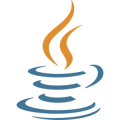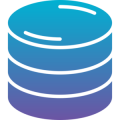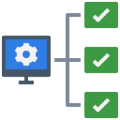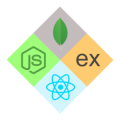Database Training Institute In Pune
This course is designed to provide a comprehensive overview of databases, covering essential concepts and practical skills for beginners and experienced professionals alike. Whether you are just starting out in the field of databases or looking to deepen your understanding, this course offers a solid foundation and hands-on experience to enhance your expertise.
Key Highlights
Certification
Mentor Support
100 % Job Assistance
Projects and Assignments
Interview Preparation
Hands-on Experience
Comprehensive Coverage
Flexible Learning Options
Learn Database
Oracle is one of the most commonly used database management systems in the world. Due to its availability, performance, and scalability, it is a popular choice for many organizations. For IT professionals who want to gain expertise in Oracle Database management, the Oracle database training and certification course at KDN Infotech is a good choice.
Database Course Overview
Oracle is one of the most commonly used database management systems in the world. Due to its availability, performance, and scalability, it is a popular choice for many organizations. For IT professionals who want to gain expertise in Oracle Database management, the Oracle database training and certification course at KDN Infotech is a good choice.
The Oracle certification course in Pune is designed to provide students with a thorough understanding of the principles and practices of Oracle database management. Students will be taught about Oracle database architecture, database installation, configuration, and management, as well as database security and backup and recovery techniques.
Additionally, students will have the chance to work with well-known Oracle tools like SQL Developer and Enterprise Manager, learning crucial management and administration skills for Oracle databases. Database training in Pune can be a significant asset for IT professionals wishing to enhance their careers in Oracle database management.
Skills you'll gain
- Database design and normalization
- SQL fundamentals and querying
- Data modeling and schema creation
- Indexing and optimization techniques
- Database management and administration
- Backup and recovery procedures
- Database security and permissions management
- Data manipulation and transaction control
- Performance tuning and optimization
- Working with relational databases.
Course Objectives
Oracle SQL
PLSQL
DIPLOMA IN ORACLE DATABASE COURSE
Course Duration : 4 Months
SQL fundamental concepts and syllabus.

- Listing The Features Of Oracle Database 10g/11G/12C
- Discussing The Basic Design, Theoretical And Physical Aspects Of A Relational Database.
- Describing The Development Environments For SQL
- Describing Oracle SQL Developer, Describing The Data Set Used By The Course.
- SDLC(SOFTWARE DEVELOPMENT LIFE CYCLE).
- ERD(ENTITY RELATIONSHIP DESIGN).
- PROJECT ALLOCATION.
- IMPLEMENTATION OF PROJECTS USING SQL PLSQL.
- Listing The Capabilities Of SQL SELECT Statements Like Projection Selection And Join.
- Generating A Report Of Data From The Output Of A Basic SELECT Statement.
- Using Arithmetic Expressions In The SELECT Statement.
- Using Column Aliases And Naming Column In Report.
- Using Concatenation Operator, Literal, Alternative Quote Operator, And The DISTINCT Keyword.
- Displaying The Table Structure Using The DESCRIBE Command.
- Writing Queries With A WHERE Clause To Limit The Output Retrieved Using The Comparison Operators And Logical Operators.
- Describing The Rules Of Precedence For Comparison And Logical AND Conditional Operators.
- Writing Queries With An ORDER BY Clause To Sort The Output.
- Sorting Output In Descending And Ascending Order.
- Using The Substitution Variables.
- Differentiating Between Single Row And Multiple Row Functions.
- Manipulating Strings Using Character Functions Like SUBSTR,INSTR,LENGTH,LOWER ,UPPER,TRIM Etc.
- Manipulating Numbers With The ROUND, TRUNC And MOD Functions.
- Performing Arithmetic With Date Data Types.
- Manipulating Dates With The Date Functions.
- Describing Implicit And Explicit Data Type Conversion.
- Using The TO_CHAR, TO_NUMBER, And TO_DATE Conversion Functions.
- Nesting Multiple Functions Single Row And Multiple Row Functrions.
- Applying The NVL, NULLIF, And COALESCE Functions To Data.
- Using Conditional IF THEN ELSE Logic In A SELECT Statement.
- Decode Function.
- Using The Aggregation Functions In SELECT Statements To Produce Meaningful Reports.
- Using AVG, SUM, MIN, And MAX Function.
- Handling Null Values In A Group Function.
- Creating Queries That Divide The Data In Groups By Using The GROUP BY Clause.
- Creating Queries That Exclude Groups Of Date By Using The HAVING Clause.
- Difference Between HAVING Clause And WHERE Clause.
- Writing SELECT Statements To Access Data From More Than One Table.
- Viewing Data That Does Not Meet A Join Condition By Using Outer Joins.
- Joining A Table By Using A Self Join.
- Creating Cross Joins(Cartesian Product).
- Using A Subquery To Solve A Problem.
- Executing Single-Row And Multiple Row Sub-Queries.
- Using Group Functions In A Sub-Query.
- Using The IN,ANY And ALL Operator In Multiple-Row Sub-Queries.
- Describing The SET Operators.
- Using UNION, UNION ALL, INTERSECT, And MINUS Operator.
- Using The ORDER BY Clause In Set Operations.
- DML INSERT ,UPDATE DELETE Statement.
- Using DROP And TRUNCATE Statements.
- Saving And Discarding Changes With The COMMIT And ROLLBACK Statements.
- Read Consistency.
- Database Objects.
- Creating Tables Using The CREATE TABLE Statement And Describing The Data Types.
- Types Of Constraints.
- Creating A Table Using A Subquery.
- Altering And Dropping A Table.
- Copying Data Using Subquery.
- Creating, Modifying, And Retrieving Data From A View Object.
- Performing Data Manipulation Language (DML) Operations On A View.
- Dropping A View.
- Creating, Using, And Modifying A Sequence.
- Creating Indexes.
- Creating Synonyms.
- SQL FUNDAMENTAL II
- Introduction.
- Course Prerequisites.
- Human Resources (HR) Schema.
- Review Of Using Oracle SQL Developer.
- SQL Statements In SQL*Plus.
- Review Of Vital Concepts Of SQL Fundametal I.
- Control User Access.
- Identify The System And Object Privileges.
- Create Users And Altering User.
- Grant System And Objects Privileges.
- Create And Grant Privileges To A Role.
- Altering Your Password.
- Revoke Object And System Privileges.
- Management Of Schema Objects.
- Add, Modify, And Drop,Defer A Column And Constraints.
- Enable And Disable A Constraint.
- Create And Remove Indexes.
- Create A Function-Based Index.
- Perform Flashback Operations Using FLASHBACK Command.
- Create An External Table By Using ORACLE_LOADER And By Using ORACLE_DATAPUMP.
- Manage Objects With Data Dictionary Views.
- What Is The Data Dictionary Views.
- USER_OBJECTS And ALL_OBJECTS Views.
- View Table And Column Information, Constraint Information.
- Query The Dictionary Views For View, Sequence, Index And Synonym Information.
- Add A Comment To A Table.
- Manipulate Large Data Sets.
- Retrieve Data Using A Subquery.
- Insert Data Using A Subquery As A Target.
- Use The WITH CHECK OPTION Keyword On DML Statements For View.
- List The Types Of Multitable INSERT Statements.
- Identify Multitable INSERT Statements.
- Merge Rows In A Table Using MERGE Command.
- How To Track Changes In Database Transactions.
- Data Management In Different Time Zones.
- The CURRENT_DATE, CURRENT_TIMESTAMP, And LOCALTIMESTAMP Functions.
- Describe DBTIMEZONE And SESSIONTIMEZONE In Timestamp.
- List The Differences Between DATE And TIMESTAMP Data Types.
- Identify The INTERVAL Data Types Year To Month And Day To Seconds.
- Use TO_TIMESTAMP, TO_YMINTERVAL, And TO_DSINTERVAL,EXTRACT FUNCTIONS.
- Retrieve Data Using Subqueries.
- Multiple-Column Subqueries With Types Pairwise And Nonpairwise.
- Correlated Subqueries.
- Insert,Update And Delete Rows Using Correlated Subqueries.
- Use The EXISTS And NOT EXISTS Operators.
- Use The WITH Clause In SQL.
- Regular Expression Support.
- Meta Characters With Regular Expressions.
- Perform A Basic Search Using The REGEXP_LIKE Function With Operator.
- Find Patterns Using The REGEXP_INSTR Function With Operator.
- Extract Substrings Using The REGEXP_SUBSTR Function With Operator.
- Replace Patterns Using The REGEXP_REPLACE Function With Operator.
- Hierarchical Retrival In SQL:
- Top Down And Bottom Up Approach.
- Connect By Clause.
- Start With Clause.
- Difference Between Connect By And Where Clause.
- ROLLUP AND CUBE Grouping Operator.
- GROUPING Function.
- Concanated Grouping With Grouping Sets.
- Composite Grouping.
PLSQL Module Database
Course Duration : 120 Hours
Learn PLSQL Database & Programming Concepts

- PL/SQL Environment With There Compiler.
- Types Of PL/SQL Blocks.
- Create And Execute A Simple Anonymous Block.
- Generate Output From A PL/SQL Block.
- Identify The Different Types Of Identifiers In A PL/SQL Subprograms.
- Use The Declarative Section.
- List The Uses For Variables In PLSQL.
- Writing Executable Statements(Begin).
- Basic Block Syntax Guidelines.
- Use Literals In PL/SQL.
- Identifier Assignments With SQL Functions.
- Use Nested Blocks As Statements In Plsql.
- Qualify An Identifier With A Label In PLSQL.
- Operators In PL/SQL.
- SELECT Statements In PL/SQL Using INTO Clause.
- Fetch Data In PL/SQL With The SELECT Statement.
- Manipulate Data In The Server Using PL/SQL Block.
- The SQL Basic Cursor Concept.
- Save And Discard Transactions Using Commit And Rollback Commands..
- Control PL/SQL Flow Of Execution Using Loops And Conditional Statements.
- Conditional Processing Using IF Else Statements.
- Conditional CASE Statements.
- Handle Nulls.
- Build Boolean Conditions With Logical Operators AND OR NOT.
- Use Iterative Control With Looping Statements Like For Loop Do While Loop And While Loop.
- Learn The Composite Data Types Of PL/SQL Records And Tables(Collections).
- Use PL/SQL Records To Hold Multiple Values Of Different Types Using Index By Table.
- Inserting And Updating With PL/SQL Records Data.
- Use INDEX BY Tables To Hold Multiple Values Of The Same Data Type With Different Data.
- Cursor FOR Loops Using Sub-Queries(Un-Named Cursor).
- Cursors By Using Parameters.
- Use The FOR UPDATE Clause To Lock Rows For Update And Delete Statements.
- Use The WHERE CURRENT Clause For Current Row Reference.
- Use Explicit Cursors.
- Explicit Cursor Attributes SQL%ROWCOUNT,SQL%FOUND,SQL%NOTFOUND.
- Cursors With Records.
- Declared Exceptions..
- Non-Predefined Oracle Server Errors.
- User-Defined Exceptions.
- Propagating Exceptions.
- The RAISE_APPLICATION_ERROR Procedure.
- Stored Procedure/Functions.
- Block Structure For PL/SQL Stored Procedures.
- Invoke A Stored Procedure From An Anonymous Block Or Another Stored Procedure Blocks.
- SHOW ERRORS Command.
- View Source Code In The USER_SOURCE Dictionary View Using Query.
- Stored Functions.
- CREATE OR REPLACE FUNCTION.
- Steps To Create A Stored Function.
- Execute A Stored Function.
- Nested Functions In PlSQL.
- Restrictions Of Calling Functions From SQL Statements.
- Drop A Function.
- Advantages Of Packages.
- Develop A Package Using Subprograms.
- Create The Package Specification And Package Body.
- Declare Public And Private Constructs.
- List The Benefits Of Function Overloading.
- Overloading Example.
- Forward Declarations In Packages.
- Limitation On Package Functions Used In SQL.
- Encapsulate Code In A Package.
- User-Defined Package Function From A SQL Statement.
- Persistent State Of Package Variables.
- List The Various Uses For The Oracle Supplied Packages.
- Reuse Pre-Packaged Code To Complete Various Tasks From Developer To DBA Purposes.
- Use The DESCRIBE Command To View The Package Specifications And Overloading.
- Explain How DBMS_OUTPUT Works (In Conjunction With SET SERVEROUPUT ON).
- File Processing With UTL_FILE.
- Review UTL_FILE Exceptions.
- UTL_FILE To Generate A Report To A File.
- Describe Using Native Dynamic SQL.
- List The Execution Flow Of SQL.
- Show The Syntax For The EXECUTE IMMEDIATE Statement For Native Dynamic SQL.
- Create A Procedure To Generate Native Dynamic SQL Using EXECUTE IMMEDIATE To Delete Rows From A Table.
- DBMS_SQL Package.
- Advantages Of Using Native Dynamic SQL Over The DBMS_SQL Package.
- Constant Package.
- Exception Handling Packages.
- Local Sub-Programs.
- Run Time Errors With An Exception Package.
- Describe The NOCOPY Compiler..
- Different Types Of Triggers..
- Triggers Are Executed With A Basic Database Trigger Examples.
- Create DML Triggers, And List The DML Trigger Components.
- Firing Sequence Of Triggers.
- DML Statement And Row Level Triggers.
- OLD And NEW Qualifiers To Reference Column Values.
- Conditional When Clause With Triggers.
- Create Triggers For DDL Events Of CREATE, ALTER, And DROP.
- Create Triggers For System Events Of SERVERERROR, STARTUP, SHUTDOWN, LOGON And LOGOFF.
- Define A Mutating Table.
- Business Application Scenarios With Triggers.
- Privileges Required To Manage Triggers.
Who can apply for the course?
The Database course is designed for individuals who are interested in learning and working with databases. It is suitable for various groups of people, including:
Individuals who have little to no prior knowledge of databases but are interested in starting a career in database management or database development.
Students pursuing computer science, information technology, or related fields who want to gain a solid foundation in database concepts and practical skills for their academic or career pursuits.
Programmers or software developers who want to expand their skill set to include database management and development, enabling them to build robust and scalable applications that involve data storage and retrieval.
Professionals working with data analysis, business intelligence, or reporting who want to understand how databases work and how to efficiently retrieve and manipulate data for analysis purposes.
Individuals responsible for managing and maintaining databases within organizations who want to enhance their knowledge and skills in database administration and optimization.
Individuals interested in learning about databases for personal projects or self-improvement, regardless of their professional background.


























